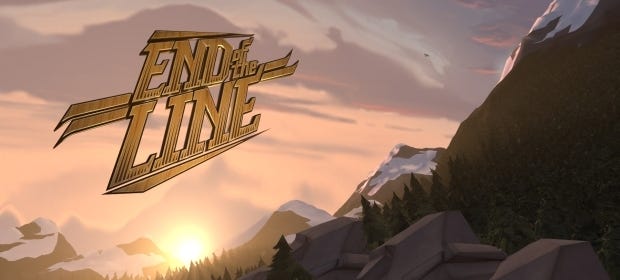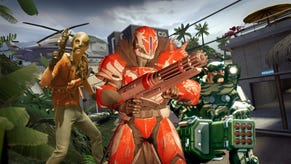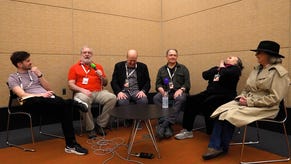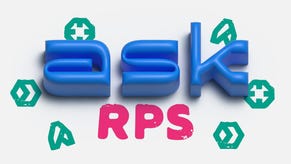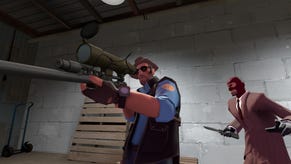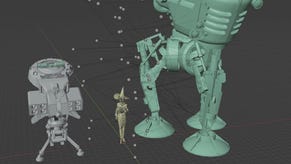Interview: James McVinnie, Director Of End Of The Line
processing film
James McVinnie has been making machinima for years, for the Half-Life modding community, for BioWare as a cinematic director on Mass Effect and Dragon Age, and more recently for himself. His Source Filmmaker short, Practical Problems, was a finalist in the comedy category at the 2012 Saxxy awards.
His latest project is End of the Line, an eight-minute Source Filmmaker short due out early next year. It again stars a cast of Team Fortress 2 characters, but it's more ambitious than any SFM short I've seen before. A minute-long trailer released in August garnered so much attention that Valve have asked McVinnie and his team to explore creating an official community update for Team Fortress 2 to coincide with the film's release.
I spoke with James about his time with BioWare, and his process for making films within videogame engines. In response to one of my questions, he made an illustrative video.
Here's a trailer for End of the Line, if you haven't seen it yet.
Plot synopsis: Feeling cheated by the established location for the mann co shipping bases, Blu soldier decides to take matters into his own hands by removing the competition in his own way.
RPS: How did you get in to making machinima? I remember watching your NeoTokyo trailer back in 2008...
It dates all the way back to when I was 11 and my friend showed me Unreal Tournament's level editor. I started making levels within the engine and then ventured into toying with the camera controls. Later, with the release of Half Life 2 and Garry's Mod, I was given a much more powerful set of tools to make video content with. That was around the time I learned about the term machinima and the huge following it had. I tried making my own Half Life 2 videos but at the time I was too young and unskilled, so I started learning as much as I could through tests and little video experiments. That eventually got the attention of some mod groups (Black Mesa Source, NeoTokyo and Zombie Panic: Source) for which I made the trailers in 2008.
RPS: How has your process changed, now that you've got tools like Source Filmmaker to work with?
SFM is a really fresh approach to video production. It condenses all the tools from an entire production into 1 screen which is usually a big bottleneck and time sink. With it I can focus more on the content I'm making and pushing my own abilities, attempting things that I would have brushed aside before as being far too complex.
RPS: You were a cinematic designer at BioWare. Does the work on End of the Line differ substantially from the stuff you did day-to-day? How?
Very much so. Specifically for scenes in BioWare games a major consideration is that there is wildly variable content depending on player choice. Certain characters may or may not be in a scene because they're alive or dead, and a host of other variables that factor in.
Combine that with the fact that you're looking at 80+ hours of content for a game compared to just 8 minutes for a short like End Of The Line, and you can see why I'm able to focus a lot more on pushing the fidelity and taking bigger risks and tackle bigger challenges with the short.
Additionally, End Of The Line is a pre-rendered video, which means there are far fewer limitations with regards to optimization. It doesn't need to run in real time on console hardware, for instance.
RPS: What's the part of the process you enjoy most? Animating? Directing and composing shots? Editing?
Pulling off complicated and technical ideas that my peers considered impossible. I really wanted to push the tool to see what I could accomplish with it. I figure that if I kept reaching for harder targets I would eventually hit a wall, but so far that I haven't. The satisfaction of pulling off these increasingly more complex ideas is really fulfilling.
RPS: Could you take a single shot from End of the Line - maybe something from the trailer - and break down all the things that are happening in that single frame? Camera work, filters, animation, sound... Be as specific as possible.
The shot I would like to cover here is one featured near the end of the trailer. In this shot the scout stands up on top of the moving train and makes his way towards the front of it after taking in his surroundings.
It ties back to the previous question regarding technical limitations. The issue here was the amount of distance I needed the train to cover over the duration of the shot. Levels in games are size limited to a grid space which varies based on the engine. Considering the Source engine, I would have needed the length of 3 grids, which is impossible to do as 2 thirds of the map would have gone unrendered. So I came up with a solution, where rather than moving the train through a long environment, I would move the environment past the stationary train by building it out of pieces and animating them. These pieces were grouped into 3 separate sections of the environment, which were then moved past the train to create the illusion of the train moving. I also added particles of fog flying by the train at high speed which helps sell the fake momentum.
Beyond the space in which the train traveled I used several common methods found in games and movies to fake depth, one being cards. Cards are an image of a section of landscape, cut to the same shape as what they are displaying. Sometimes they are layered on one another to emulate depth during motion. This is a really common practice in cartoons.
The 2nd trick used in the shot was with the mountains. I used a function in the Source engine referred to as a 3D skybox. Skyboxes are a standard in games where a large box or dome is placed around the player and environment to display a 2D sky image. The source engine has standard skyboxes but also has 3D skyboxes which allow you to project objects outside of the grid space. These objects are not actually there and are generally 16x smaller than what they look like while projected. This allowed me to project a mountain range and a sky card behind them, greatly increasing the visual size of the space. These mountains didn't move as it creates a sense of scale and distance. This video is of the shot in its current state as it still needs further work, but should help everyone understand what I'm describing.
RPS: What do you wish SFM, or Source, would let you do, or what do you wish Valve would support better?
Dynamic prop scaling for SFM. This feature is somewhat overlooked by the public but has been a life saver for me on the Mass Effect franchise (Unreal engine). Dynamic scaling allows you to resize a prop on the fly. For instance if a knife wouldn't fit into someone's hand or a mountain was slightly too big for the shot. You could adjust them in a few clicks. Without it, you need to manually scale an object in an external 3D program and then compile a script to build the object to be functional within the Source engine again which can take on average of 3-4 minutes.
RPS: Your previous TF2 short, Practical Problems, used Kinect motion capture for the animation. What prompted the shift to by-hand animation that you're doing this time?
I always wanted to step into hand animation and it's a field I still have a lot to learn in. My Practical Problems short was just a quick test for me to get to grips with SFM. I only had a few days to play with it while I was home with an injury, so motion capture allowed me to bypass the hand animation while still communicating all the story elements I needed. Without that the short could possibly never have seen a release. The success was very unexpected.
RPS: You seem to have a pretty big team this time around. Who are you working with?
After the Saxxy awards last year I noticed a lot of talented people with potential to push themselves further. So I pulled some of those guys on board as well as some friends I've worked with prior.
Luke Murray, who goes by MurrayThis on YouTube blew my mind away with his character animation skills. I knew he was exactly what the project needed, and End of the Line was the project he needed to get himself noticed more. He's been hard at work for the last few months, handling the more challenging animations in the short.
Jake Harold, who goes by The Heartsman, directed the community made Team Fortress 2 update Robotic Boogaloo. He also produced a large amount of hats available in the game. On End of the Line he will be helping with models and website design.
Rebbacus is a talented game modeller whose previous works can be seen in many Source Filmmaker videos. Daniel Escobedo is a friend who I met through working on the Black Mesa Source mod. He has a good knowledge of many things Source and helps with particles.
Leri Greer is a friend I met through working on the NeoTokyo mod. A great designer with credits on movies such as District 9, Man of Steel and Elysium. He designed the logo for End of the Line as well as graphic design work such as maps and signs.
On the audio front we have Lars Erik Fjøsne composing the music with his friend Arslan Qureshi who also provides the guitar work. Lars worked on many big Source Filmmaker shorts. Mike Hillard, who provided the scarily accurate voice of the scientists in the Black Mesa Source mod, is supporting Lars with brass instrument work which really gives the soundtrack that Team Fortress 2 feeling. JP Neufeld who has credits on many Source Filmmaker shots will be handling sound design and mixing.
RPS: Valve have spoken to you about the possibility of End of the Line being an official update, with supporting content. What would that look like? New maps or modes around the short?
This is the question we're asking ourselves and trying to figure out on a daily basis. We're currently experimenting with prototypes on the side of the video production and keeping an eye on the steam workshop to see what people are making.
RPS: Would you and your team be building those maps and that extra content, or are you working with Valve's team to see what's possible?
With this being a potential community made update Valve have given us the freedom to make what we feel the public is looking for.
RPS: Valve are always keen to support modders through the Workshop, but there's no way yet to sell SFM shorts...
Who knows what the future holds with regards to Valve and how they distribute the community content. They've done a great job of it so far and I would love to see something along those lines. It would encourage more high end video content, which is always good. It's hard to say if I would do this full-time. Again, I'm in it for the fresh experiences and learnable skills. My current plan is to go back to game development after this, and potentially even starting my own game production. We'll cross that bridge when we get there.
RPS: Do you have a release date in mind?
I originally stated the end of the year as a target for release, but I wasn't expecting to be developing it into an update at the time. With that in mind, we're probably looking at a little while longer.
James was kind enough to provide each of these images at wallpaper resolution. Click any to make 'em bigger.
